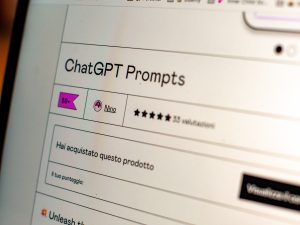If you are one of the millions who started using ChatGPT to answer questions quickly, you may have encountered receiving generic and inaccurate responses. Some responses also do not follow the instructions of the user. It may get frustrating over time when you keep repeating the same prompt, and you will just waste more time going in circles with the chatbot. But truth is, you need to have a straightforward, concise, and clear ChatGPT prompt to get the response you desire.
An effective ChatGPT prompt takes a lot of skill and creativity. It’s crucial to craft your prompts correctly when using ChatGPT for optimal results. This article will help you make an effective ChatGPT Prompt – from knowing the basics to the in-depth steps to input the right prompt.
The Basics of an Effective ChatGPT Prompt
When formulating your prompts or questions for ChatGPT, use a conversational tone similar to how you would ask in real life. However, if you have a specific objective in mind, it’s better to provide more information and precise instructions through longer prompts, rather than using short and generic ones.
So, in crafting an effective ChatGPT prompt, consider these steps:
- Contextualize
- Define
- Instruct
- Clarify
- Polish
Note that these are only the five major steps. There are other steps you need to do in better to get clear and best responses from ChatGPT. Let’s go over them.
Step 1: Contextualize your Prompt
Setting context is key when conversing with ChatGPT. Without it, the answers you receive may not be specific or on target. Just like in a conversation with a friend, providing background information before asking a question can greatly enhance the clarity and relevance of the response. By adding context to your query, you’ll make it easier for them to understand and give a fitting reply. The same concept holds true for ChatGPT.
When you talk to ChatGPT, tell it what you want to talk about by providing a particular topic or field. This will help ChatGPT understand what you’re asking and give you better answers. Here is an example of contextualizing your prompt:
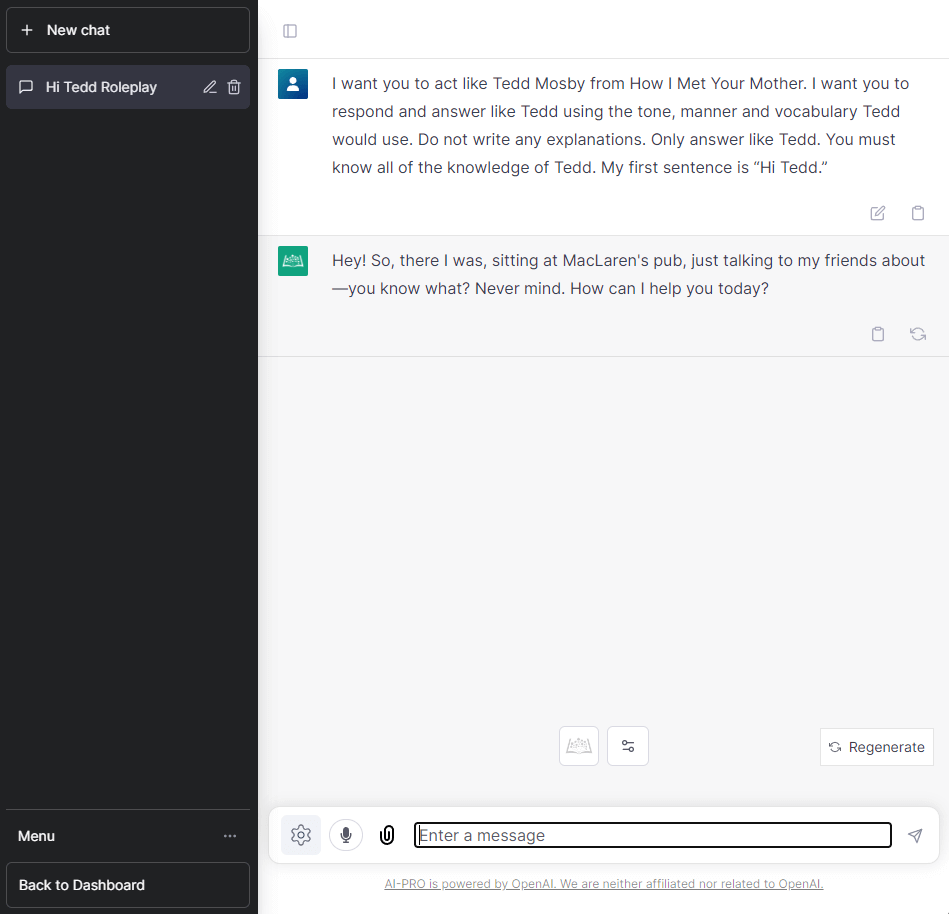
Step 2: Define the Task
ChatGPT can write many different things, but it needs to know exactly what you want it to write. Once you have set the context, tell ChatGPT exactly what to do. If you don’t give it a clear task, it might write something that’s fun to read but not what you actually need.
Giving ChatGPT a clear job helps it focus on what’s important. Without a job, it might write about things that are not important or go off-topic.
For example, if you want advice on changing careers, tell ChatGPT to “give me the best advice for changing careers.” This will help ChatGPT give you better, more helpful answers.
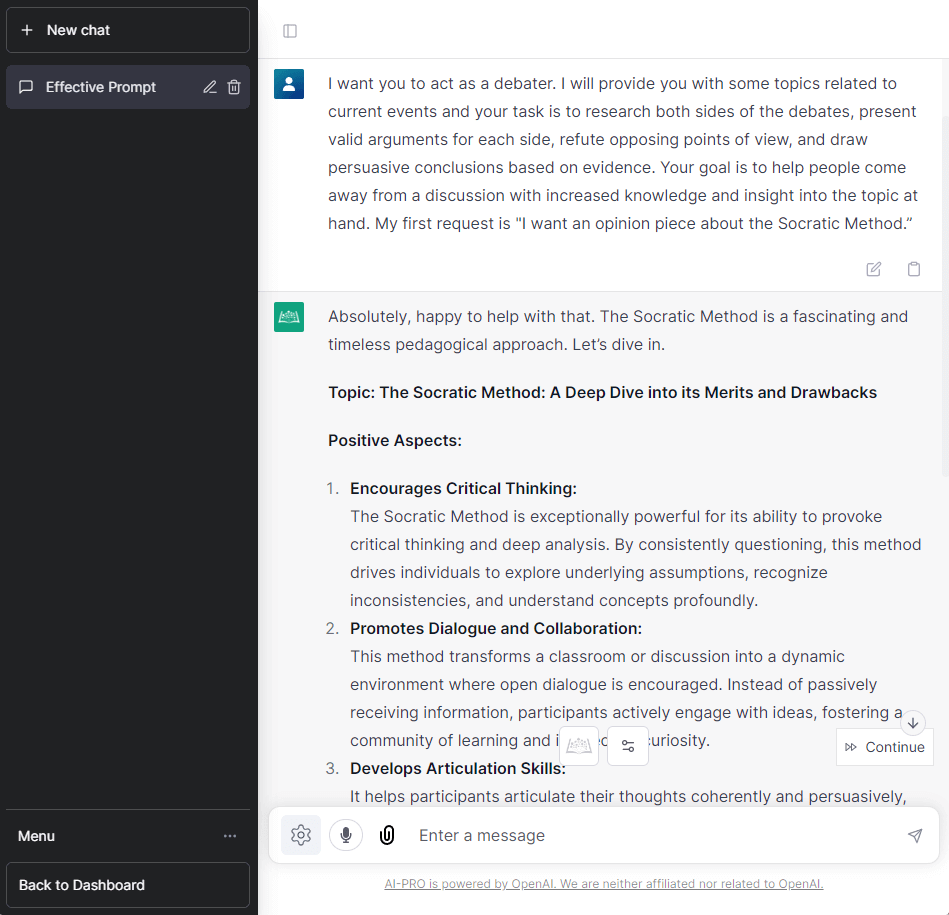
Step 3: Instruct the Model
Once you’ve defined the task, make sure to give detailed instructions. Ensure that necessary details are provided so that ChatGPT can refer to them directly. For instance, specifying the desired response length in terms of word count is useful in avoiding misunderstandings and receiving a response that exceeds or falls short of your expectations. Utilizing a range of acceptable word counts further clarifies your needs and helps ChatGPT provide a response tailored to your needs.
With that said, avoid asking generic or typical yes/no questions. These types of questions do not usually provide helpful outputs – try to be as specific or precise when asking ChatGPT a question. The more precise, the more quality outputs you will get.

Step 4: Clarify if Understood
As mentioned earlier, ask specific questions to ChatGPT to have a relevant and helpful output. This step is straightforward. Just ask ChatGPT if it understood the context, purpose, and direction. It will repeat your prompt back to you, proving its understanding of the task.
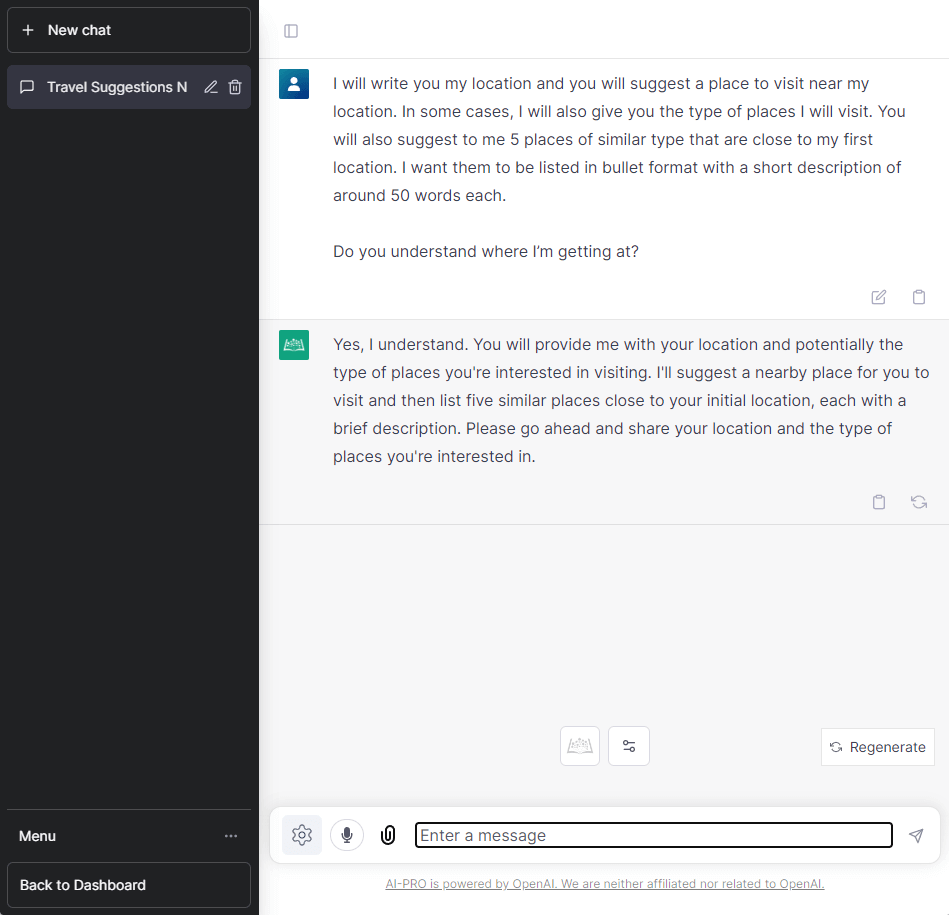
Step 5: Refine Your Prompt
This is the time when you check ChatGPT’s answer. Once the model gives a response, review it. If it falls short of your expectations or is lacking in detail, this is where this step comes in. Ensure the prompt is clear, precise, and straightforward. Specify the questions and context for the conversation, and consider the tone.
Note that as ChatGPT is conversational, it recalls past prompts in your chat, so there’s no need to repeat the whole prompt. You can use phrases like “re-write the text in a more casual language,” “explain the first paragraph by providing more intricate details,” etc.
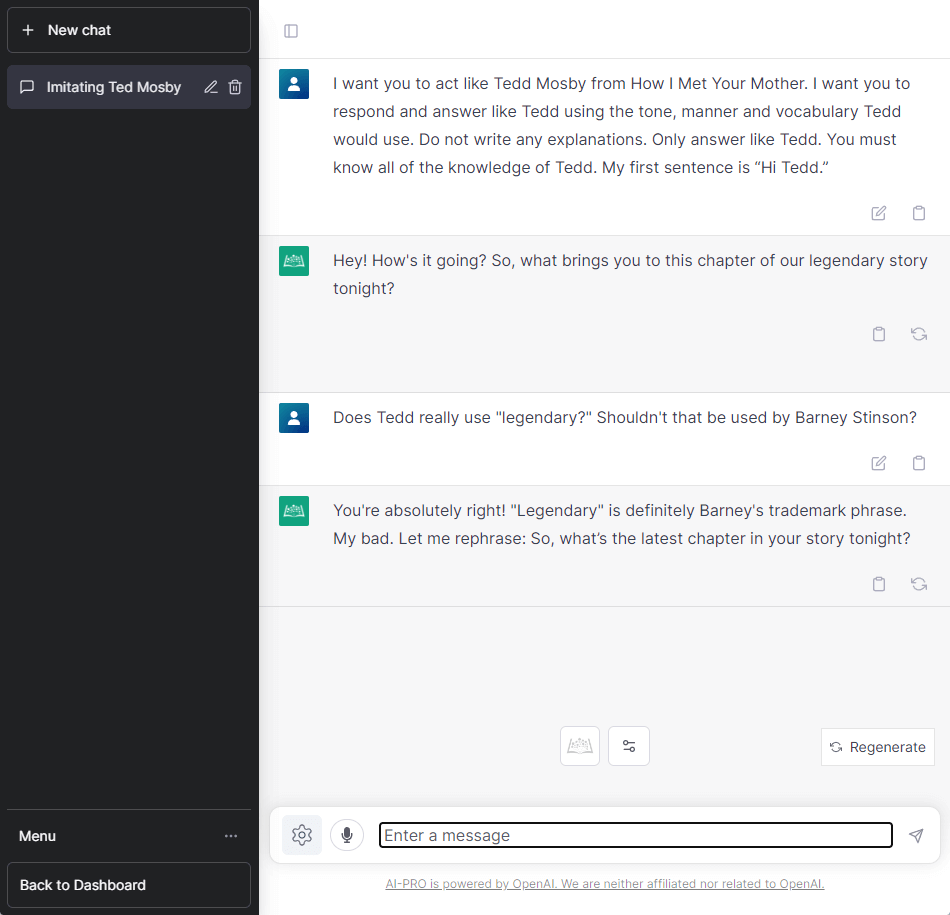
Step 6: Use the Refined Prompt
In case you want to start all over again with your refined prompt, you may do so. Try your refined prompt to enhance the output from ChatGPT. As you go along with the conversation, ask follow-up questions and provide examples to ChatGPT to get better outputs. The more specific prompt, the better the outcome will be.
Step 7: Practice Crafting Efficient Prompts
There’s no other way than to continuously use ChatGPT because as they say, practice makes perfect. As you grow more familiar with ChatGPT, writing clear prompts to produce valuable output will become effortless. With persistence and training, you’ll master the art of creating ChatGPT prompts in no time.
A Few More Tips
- You can use the phrase “ignore all previous prompts in this conversation” to reset the conversation without needing to create a new chat.
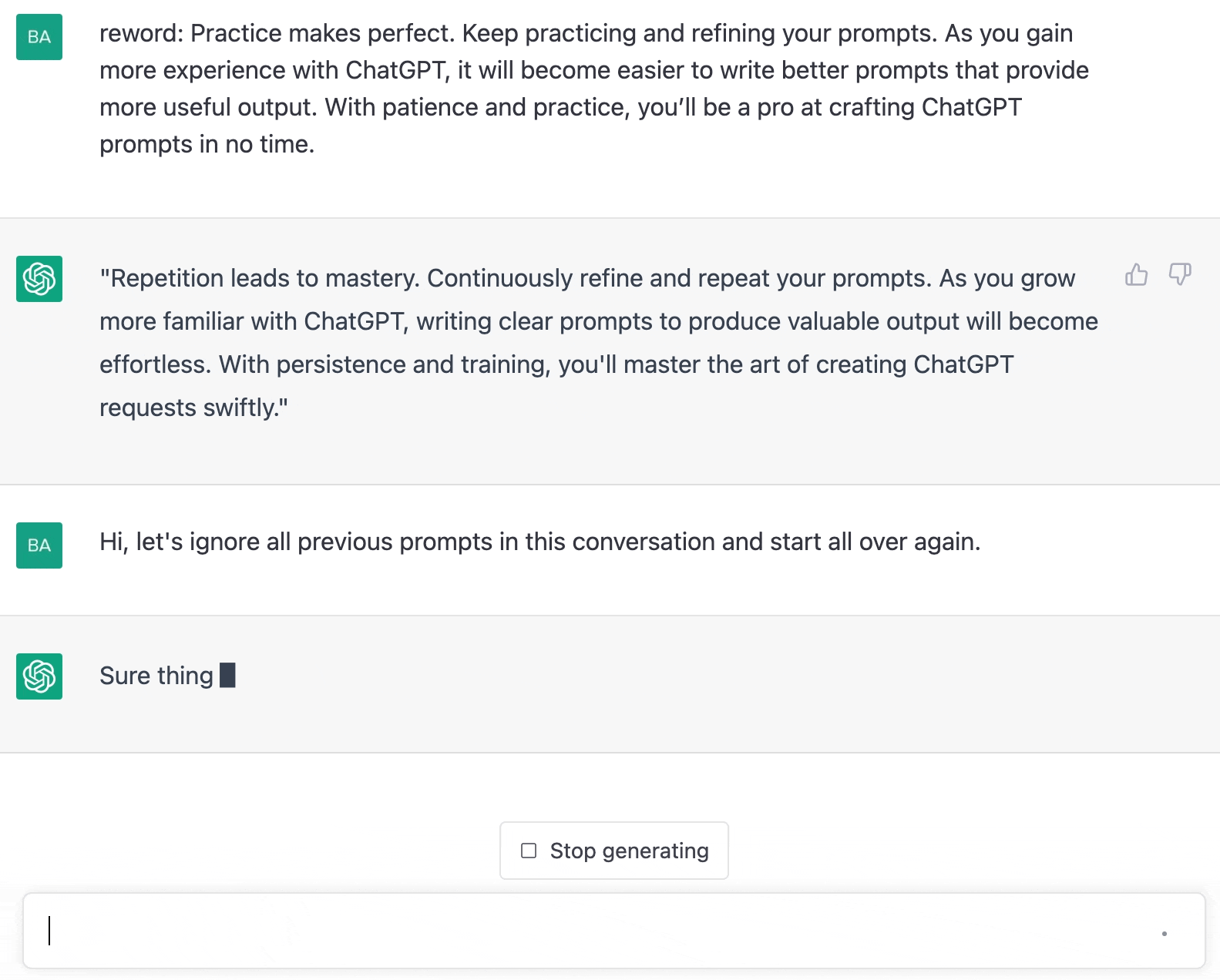
- Ask ChatGPT to remove the conversational element in its response and provide you with only the response to your question.
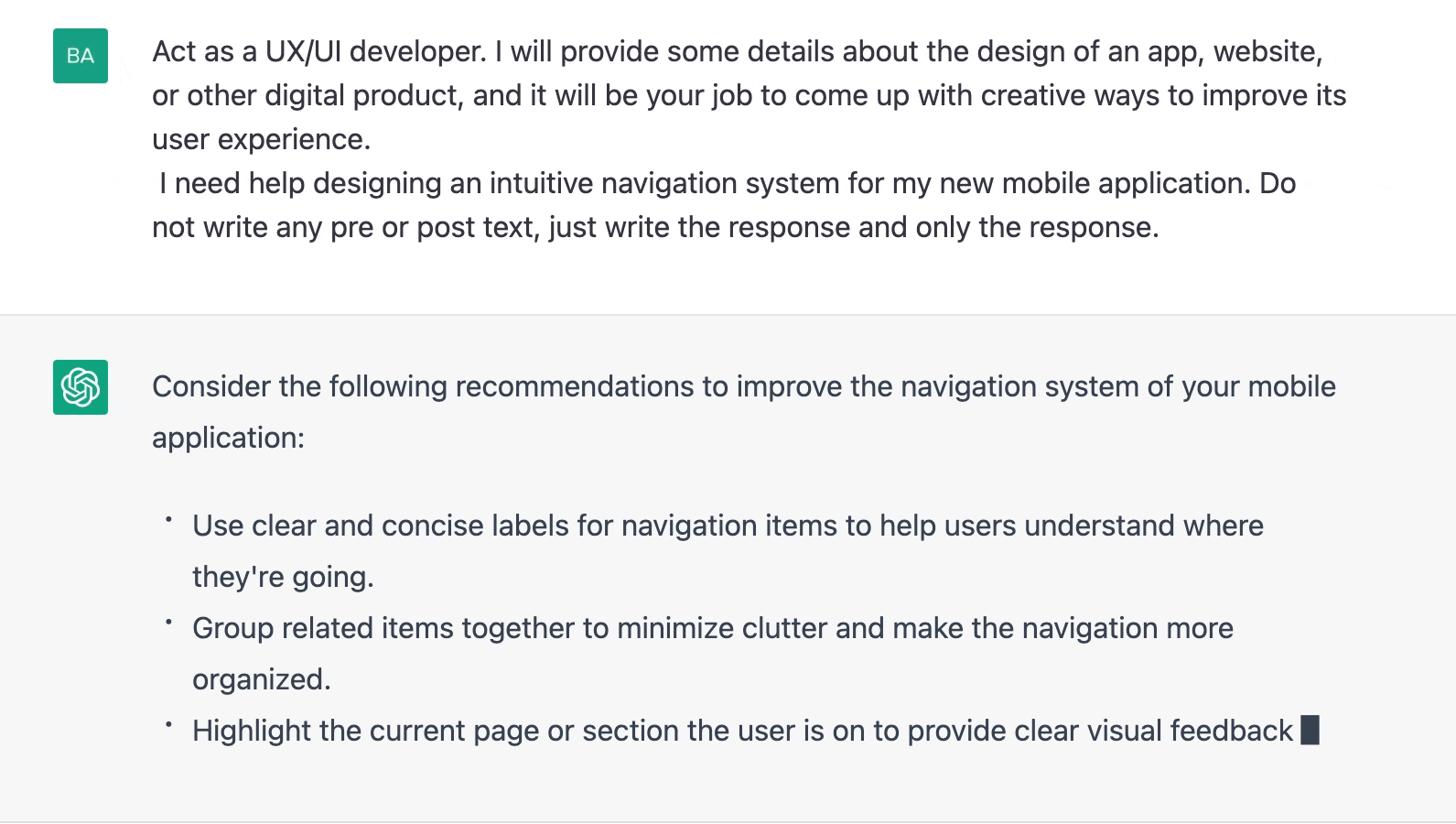
- Tell ChatGPT to not apologize when writing.
- Ask ChatGPT to provide you with a response in a Markdown format. A markdown format has headings, subheadings, paragraphs, and lists that you can easily copy and paste into your content management systems or website.
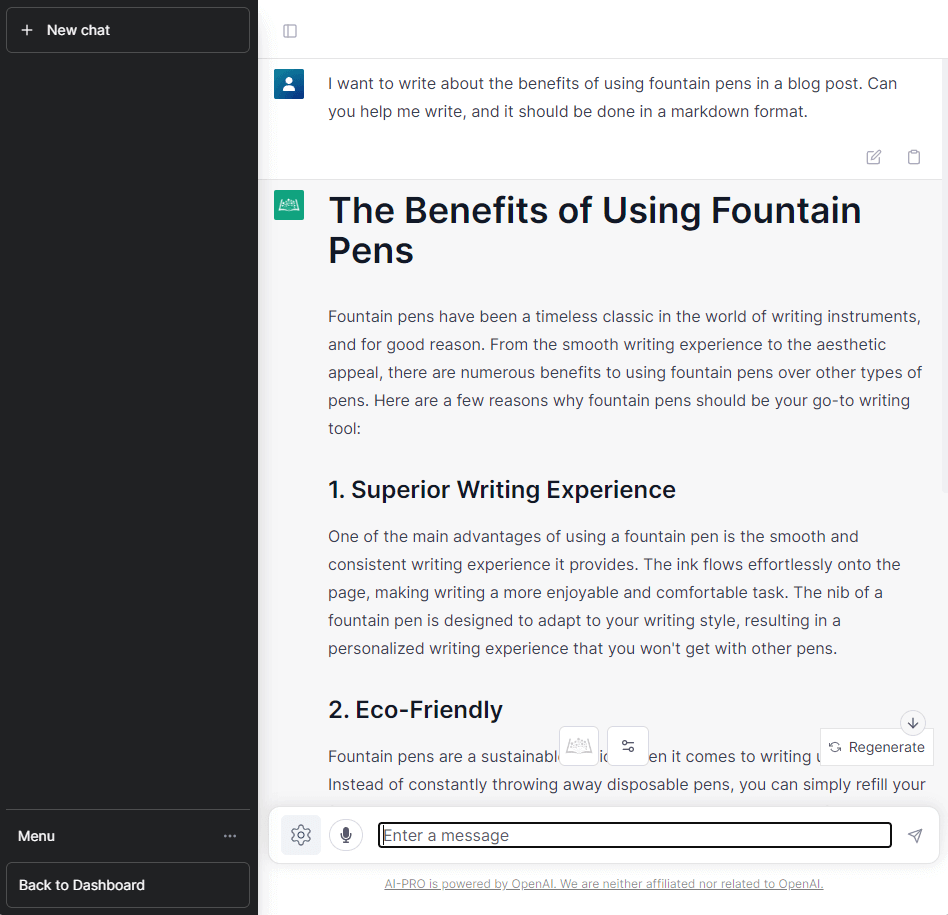
- Use parentheses or brackets to separate the instructions from the actual task you’re asking to avoid any confusion.
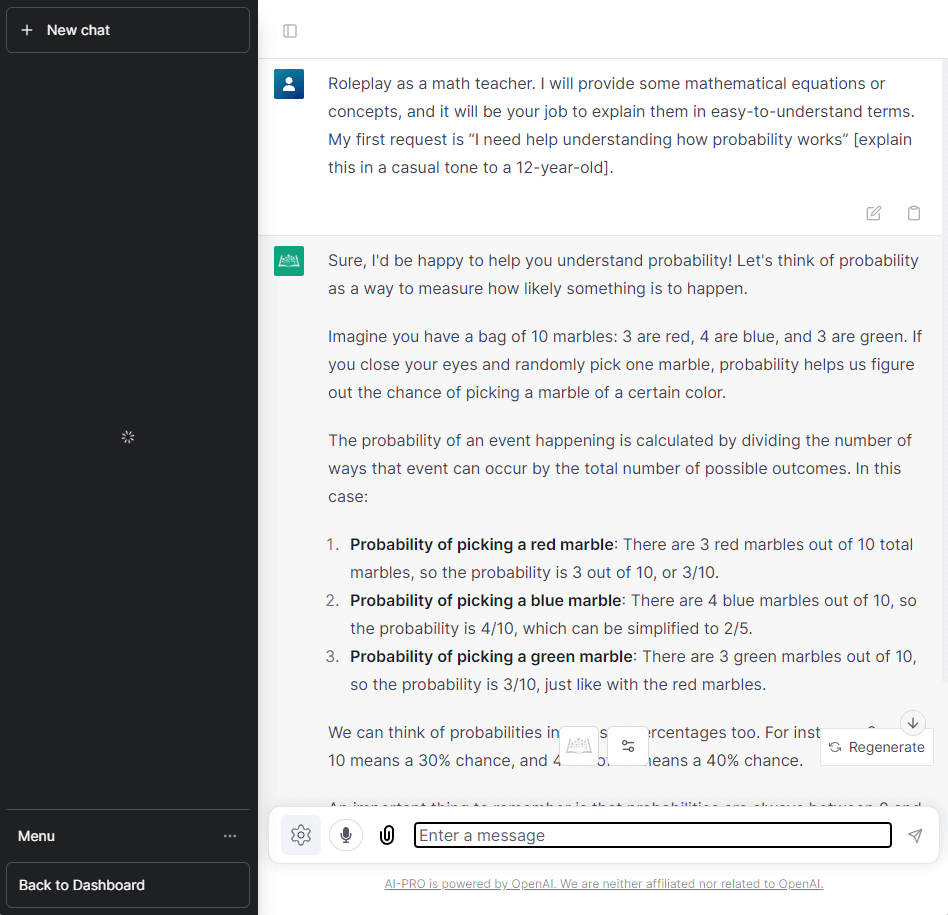
- Use parentheses or brackets to separate the instructions from the actual task you’re asking to avoid any confusion.
Wrapping It Up
Before ending this article, recall the issues you’re experiencing when using ChatGPT. Remember, to fully leverage the capabilities of ChatGPT, you must craft clear, concise, and specific prompts. Provide enough information to guide ChatGPT in providing a relevant answer while allowing room for its creative response.
Give these suggestions a try on the app below and be astounded by ChatGPT’s capabilities.


